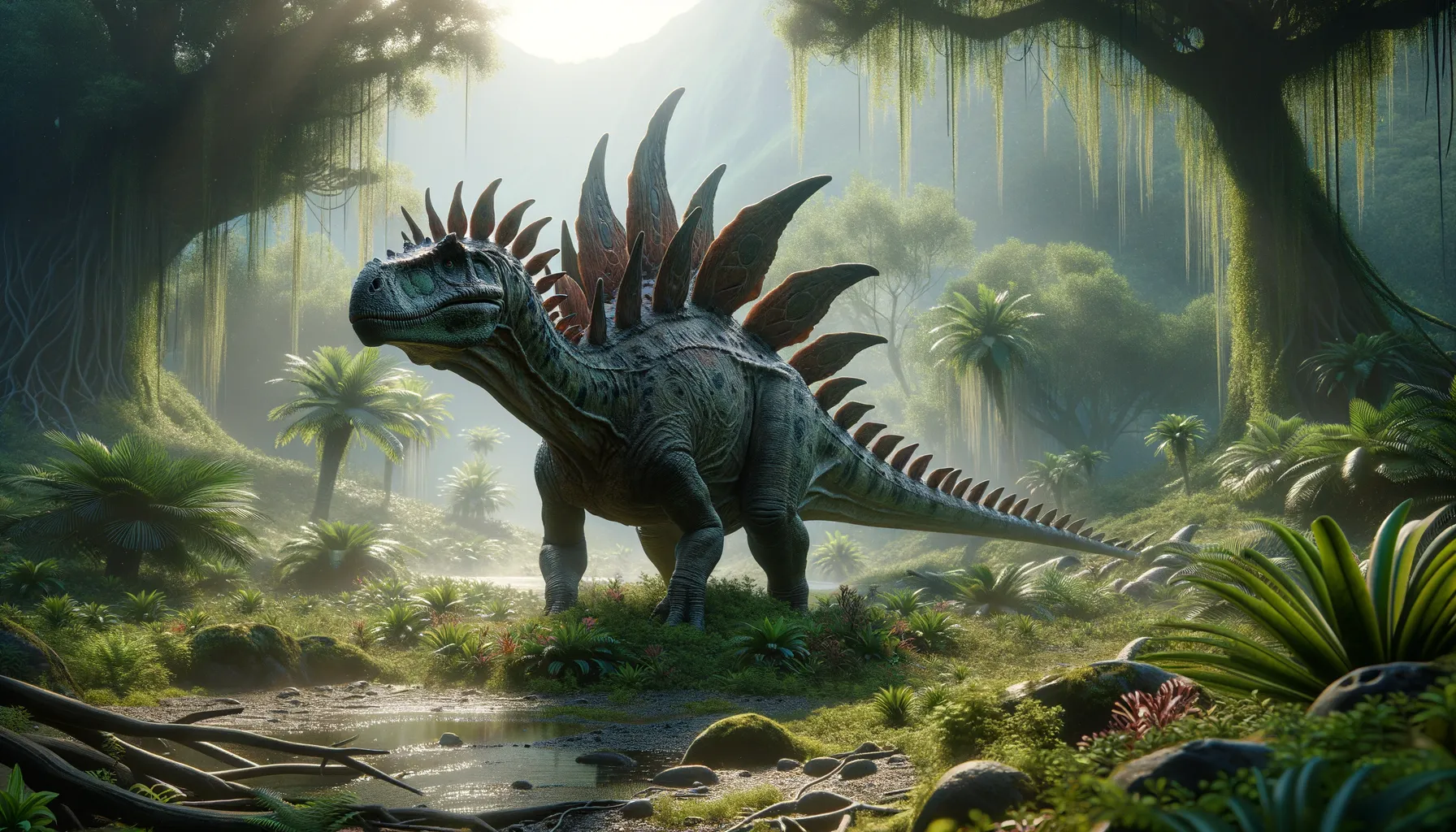
Jiangjunosaurus
A stegosaur with a story to tell!
Period
Jurassic
Length
Measured approximately 5 meters in length.
Height
Stood about 1.5 meters tall at the hip.
Weight
Weighed around 300 kilograms.
Jiangjunosaurus was a herbivorous dinosaur that roamed the Jurassic landscapes of present-day China. It belonged to the stegosaur family, known for its distinctive back plates and spikes. This medium-sized dinosaur thrived in lush environments, feeding primarily on low-lying vegetation. With evidence of a well-developed sense of hearing, Jiangjunosaurus might have been more socially interactive than previously thought, possibly traveling in small herds for protection against predators.
Diet
Jiangjunosaurus had a plant-based diet, feeding on a variety of ferns and cycads. Its beak-like mouth was well-adapted to cropping vegetation close to the ground.
Hunting
Being a herbivore, Jiangjunosaurus didn't hunt its food. Instead, it foraged for plants and used its strong jaw muscles to chew tough vegetation.
Environmental challenges
Jiangjunosaurus faced challenges such as changing climates and competition for food. Its habitat was frequently impacted by volcanic activities, influencing plant availability. Seasonal variations might have dictated its migration patterns within the region to locate sustaining resources.
Speed
Jiangjunosaurus was relatively slow-moving.
Lifespan
Estimated to live up to 30 years.
First discovery
Discovered in the Shishugou Formation, China, in 2007.
Fun Facts
- Jiangjunosaurus was a herbivorous dinosaur that lived about 160 million years ago during the Late Jurassic period.
- It was discovered in the Shishugou Formation in the Junggar Basin of China, a site known for many exciting dinosaur finds.
- Jiangjunosaurus belonged to the stegosaur group, which is famous for its bony plates and spikes along its back.
- This dinosaur had a small head compared to its body, which is typical for herbivorous dinosaurs that grazed on low-lying plants.
- Jiangjunosaurus is thought to have moved in herds, possibly using its plates for display or to help regulate its body temperature.
- The name Jiangjunosaurus translates to 'Jiangjun lizard', named after the area where it was found.
- Despite its fearsome appearance with spikes and plates, it was a relatively peaceful plant-eater, posing no threat to other creatures around it.
Growth and Development
Jiangjunosaurus underwent rapid growth during its juvenile stages, reaching maturity relatively quickly. Fossil evidence suggests a period of intense growth, followed by a steadier rate as it approached adulthood.
Habitat
Jiangjunosaurus lived in floodplains with dense forests and plenty of lush vegetation. The environment where it thrived was warm and humid, ideal for supporting a wide array of plant life. Access to rivers and lakes provided necessary hydration and additional plant resources.
Interaction with other species
Jiangjunosaurus likely shared its ecosystem with various herbivorous and carnivorous dinosaurs. It engaged in mutual coexistence with other herbivores, while remaining cautious of predators. Its spikes may have served as defensive mechanisms against carnivorous threats.
Natural lifespan
Jiangjunosaurus likely experienced a natural lifespan of up to 30 years.
Reproduction
Jiangjunosaurus likely laid eggs in nests built from vegetation and soil. Parental care might have been limited, with hatchlings relying on instinct to forage and evade predators. Fossilized egg fragments suggest communal nesting sites, possibly to deter predators.
Social behaviour
Jiangjunosaurus might have displayed herd-like behavior, moving in small groups for safety and social interaction. Communication could have been through vocalizations or body movements, aiding coordination within the group.
Fossil locations
The first fossils of Jiangjunosaurus were uncovered in the Shishugou Formation in northwestern China. This site has yielded fossils of many other Jurassic dinosaurs, offering insights into the ecosystem of that era. The location continues to be a significant area for paleontological studies and discoveries.
